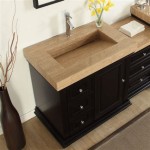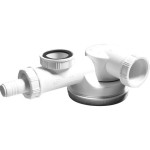Granite Bathroom Vanity Tops: An In-Depth Exploration
Granite bathroom vanity tops are a popular choice for homeowners and designers seeking a durable, aesthetically pleasing, and relatively low-maintenance surface for their bathroom spaces. Granite, a naturally occurring igneous rock, is composed primarily of quartz, feldspar, and mica, resulting in a crystalline structure that is both visually appealing and remarkably resilient. The popularity of granite vanity tops stems from a combination of factors, including their unique colors and patterns, inherent strength, resistance to heat and water, and contribution to a luxurious bathroom aesthetic.
The selection of a granite vanity top involves careful consideration of various factors, ranging from color and pattern to edge profiles and sink configurations. Understanding the properties of granite, the options available, and the implications of each choice is crucial for ensuring long-term satisfaction with this significant bathroom investment. This article provides a comprehensive overview of granite bathroom vanity tops, exploring their advantages, disadvantages, selection criteria, maintenance requirements, and cost considerations.
Durability and Longevity
One of the primary reasons for the enduring popularity of granite vanity tops is their exceptional durability. Granite is an extremely hard and dense material, making it highly resistant to scratches, chips, and abrasions. This resilience is particularly important in a bathroom setting, where vanity tops are subjected to frequent use and potential contact with abrasive cleaning products, cosmetics, and other items. The inherent strength of granite ensures that it can withstand the daily wear and tear of bathroom use without exhibiting significant signs of damage or deterioration.
Furthermore, granite is resistant to heat, making it suitable for use near styling tools such as curling irons and hair dryers. While it is always advisable to use heat-resistant mats under very hot items, granite provides a degree of protection against accidental heat exposure that many other countertop materials lack. Its resistance to water also contributes to its longevity in the moisture-rich environment of a bathroom. When properly sealed, granite is non-porous and impervious to water penetration, preventing stains and the growth of mold or mildew. This characteristic is essential for maintaining the integrity and appearance of the vanity top over time.
The longevity of granite vanity tops is another significant advantage. With proper care and maintenance, a granite vanity top can last for decades, making it a worthwhile investment in the long-term value of a home. The initial cost of granite may be higher than that of some other countertop materials, but its durability and extended lifespan often offset the higher initial expenditure. In addition, the enduring aesthetic appeal of granite ensures that it remains a desirable feature in a bathroom for many years, potentially increasing the resale value of the property.
Aesthetic Versatility and Variety
The natural beauty of granite is a key factor in its widespread appeal. Each slab of granite is unique, exhibiting variations in color, pattern, and veining that are determined by the geological processes that formed the stone. These variations contribute to the distinct character and individuality of granite vanity tops, allowing for a wide range of aesthetic possibilities. Granite vanity tops are available in a vast array of colors, ranging from light neutrals such as white, beige, and gray to darker hues such as black, brown, and green. The patterns and veining can vary from subtle and uniform to bold and dramatic, depending on the specific type of granite. This diverse range of options allows homeowners and designers to select a granite vanity top that perfectly complements the overall design scheme of the bathroom.
The versatility of granite extends to its compatibility with various design styles. Granite can be incorporated into traditional, contemporary, transitional, and even minimalist bathrooms, adding a touch of elegance and sophistication to any space. The natural stone complements a wide range of cabinet finishes, hardware styles, and tile selections, allowing for seamless integration into the existing bathroom aesthetic. The ability to customize the edge profile of the granite vanity top further enhances its aesthetic versatility. Options such as bullnose, ogee, and eased edges can be chosen to create a desired look, from soft and rounded to sharp and modern.
Furthermore, the natural variations in granite ensure that each vanity top is a one-of-a-kind piece, adding a unique element to the bathroom design. The subtle differences in color and pattern contribute to the overall visual interest and textural depth of the space. This level of individuality is difficult to replicate with man-made materials, making granite a particularly desirable choice for those seeking a distinctive and personalized bathroom design.
Maintenance and Care Requirements
While granite is a durable and resilient material, proper maintenance and care are essential for preserving its appearance and extending its lifespan. The primary maintenance requirement for granite vanity tops is regular sealing. Granite is a porous material to some extent, and sealing helps to prevent the absorption of water, stains, and other liquids. Sealing creates a protective barrier on the surface of the granite, making it easier to clean and maintain. The frequency of sealing depends on the type of granite and the sealant used, but generally, a granite vanity top should be sealed every one to two years.
Cleaning granite vanity tops is relatively straightforward. A mild dish soap and water solution is typically sufficient for removing everyday dirt and grime. It is important to avoid using abrasive cleaners, harsh chemicals, or acidic substances, as these can damage the sealant or the surface of the granite. Gentle wiping with a soft cloth or sponge is recommended to prevent scratches. Spills should be cleaned up promptly to prevent staining, particularly from acidic substances such as lemon juice or vinegar. Although granite is heat resistant, it is always advisable to use trivets or heat-resistant mats under hot items to protect the surface from potential thermal shock.
In addition to regular cleaning and sealing, it is important to avoid placing heavy objects directly on the granite vanity top, as this can potentially cause chipping or cracking. The use of cutting boards is recommended when using knives or other sharp objects on the vanity top. While granite is resistant to scratches, it is not entirely impervious to damage from sharp objects. By following these simple maintenance and care guidelines, homeowners can ensure that their granite vanity tops remain beautiful and functional for many years to come.
Addressing common misconceptions about granite maintenance is also important. Some believe granite requires specialized, expensive cleaners. However, as previously stated, a mild soap and water mixture is usually sufficient. Another common misconception is that all granite is the same and requires the same level of sealing. The porosity of granite can vary depending on the type and source, so it's essential to follow the manufacturer's instructions or consult with a professional regarding appropriate sealing frequency and products.
Furthermore, professional cleaning and polishing services are available for granite vanity tops that have become stained, scratched, or otherwise damaged. These services can help to restore the original luster and appearance of the granite, extending its lifespan and preserving its value. These professionals have the specialized equipment and knowledge necessary to safely and effectively repair and restore granite surfaces.
Selecting the right granite for a bathroom vanity also involves considering the finish. Polished granite is a popular choice for its glossy, reflective surface, but it can show fingerprints and water spots more readily than honed or leathered finishes. Honed granite has a matte finish that is less reflective and often more forgiving in terms of showing imperfections. Leathered granite has a textured surface that adds a tactile element to the vanity top and can also hide fingerprints and water spots.
Ultimately, the choice of granite finish depends on personal preference and the desired aesthetic. However, it is important to consider the practical implications of each finish in terms of maintenance and care. Polished granite may require more frequent cleaning to maintain its glossy appearance, while honed and leathered granite may require less frequent maintenance. Understanding the properties of each finish and how they relate to the demands of a bathroom environment is crucial for making an informed decision.

Natural Granite Bathroom Vanity Tops Wolf Home S

Granite Bathroom Vanity Tops Make The Perfect Countertop

Choosing Bathroom Countertops Quartz Granite Or Marble

Pros Cons Of Granite Bathroom Countertops

Custom Bathroom Vanity Tops Arch City Granite Marble

Why Choose A Granite Countertop For Bathroom Vanity

Vanity Tops For A Modern Bathroom Wolf Home S

Bathroom Countertop Dad S Construction Best Local Contractor

Granite Bathroom Design Ideas Best Designs In 2024 Marble Com

Modern Bathroom Countertops Vanities In Albany Ny
Related Posts







